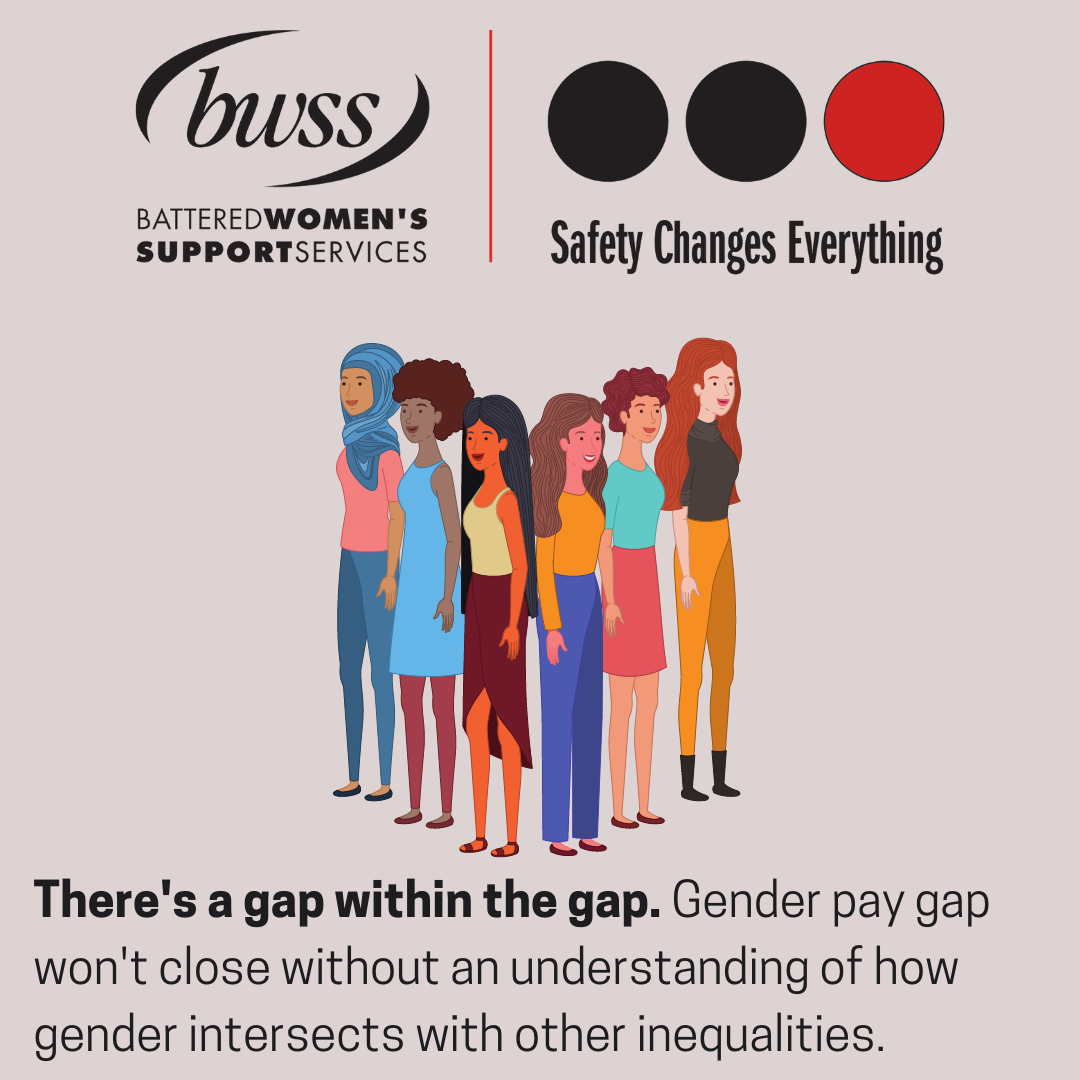We’ve created 31 Actions for Gender Justice to raise awareness, spark conversations and take action that transforms gender and power relations, and the structures, norms and values that underpin them. Every day for the month of March we will highlight an action that advances gender equity and justice for International Women’s Day (IWD).
Close the Gender Pay Gap
31 Actions for Gender Justice: Day 11
The gender pay gap is the difference in average wages earned by women and men.
It’s driven by different factors such as women encountering discrimination in the workplace, women-dominated low-paying jobs historically undervalued, underrepresentation in leadership positions, fewer advancement opportunities due to leaving and re-entering the workforce to meet family responsibilities.
Although the gender pay gap affects all women, gender intersects with other inequalities that put women in marginalized groups at greater risk of living in poverty; Indigenous women, racialized women, Black women, Immigrant women, femmes and non-binary folks, trans and gender diverse people.
There’s a gap within the gap.
And COVID-19 has exacerbated these inequalities. Many women lost their jobs. Women’s economic progress set back decades during COVID-19.
In Canada, almost one in three Black, other racialized, and Indigenous women work in sales and service occupations, which saw the largest job losses between February and December 2020.[1] Many of these jobs are not coming back after the pandemic.
We need, not only tangible changes to close the gender gap, but also a hard look through an intersectional lens to address the challenges of the most marginalized women.
Indigenous, racialized, disabled and newcomer women all experience the wage gap in different ways.[2]
- Indigenous women working full-time, full-year earn an average of 35% less than non-Indigenous men, earning 65 cents to the dollar.
- Racialized women working full-time, full-year earn an average of 33% less than non-racialized men, earning 67 cents to the dollar.
- Newcomer women working full-time, full-year earn an average of 29% less than non-newcomer men, earning 71 cents to the dollar.
We all can play a role in making sure that gender-based discrimination is addressed in the workplace.
The first step is awareness about the real issue: women face inequalities at home, at school, in many places including the workplace. But gender intersects with other inequalities, which results in women in marginalized groups experiencing oppression in different ways for a variety of reasons like structures, systems and institutions legacy of colonialism.
There’s no such thing as one-solution-fits-all. And the pay gender gap will not close without the understanding of the different ways women, gender diverse and non-binary folks experience oppression.
Joining the conversation is key to understand gender issues in the workplace. Learning about intersectionality to understand the needs of marginalized individuals and groups.
Joining the fight against, question and resist colonial systems that continue to oppress. Promoting diversity and inclusion to tackle discrimination. Changing hiring practices to give equal opportunities to everyone –men, women, gender diverse people, non-binary folks regardless of race, origin, nationality, sex, religion, culture and any other identifying characteristic. Speak up and step up.
[1] Women, work and COVID-19 Priorities for supporting women and the economy, 2021. Canadian Centre for Policy Alternatives. Retrieved from https://www.policyalternatives.ca/sites/default/files/uploads/publications/National%20Office/2021/03/Women%20work%20and%20COVID.pdf
[1] Facts about the Gender Wage Gap in Canada, 2019. Canadian Women’s Foundation. Retrieved from https://canadianwomen.org/wp-content/uploads/2018/08/Gender-Wage-Gap-Fact-Sheet_AUGUST-2018_FINAL1.pdf





